Some more days have gone by in a blur of temples, lost-my-mind style crazy shopping, and stuffing my face with all the things I need to eat before I go home. If you’re ever in Japan, I suggest you stuff your face with the following as well (along with items mentioned in the previous post): ramen, soba, tempura, gyoza, oyako don (eaten too quickly to take a photo), buns from Pin de Bleu, and mochi of all varieties. I happened to really like warabi mochi, though it seems not everyone is similarly enthusiastic about it. What can I say? I like mochi.








So we really only had one more day of temples. The goal that day was to get to Gingkakuji, the silver pavilion, so Allan’s mom and I had a fitting discussion on Buddhism and religion as our group took a walk up the Philospher’s Path to the temple. Contrary to my expectations, the silver pavilion is not silver the way Kinkakuji, the golden pavilion, is gold. Ashikaga Yoshimasa, who built the temple found that silver was not as easy to work with as gold, so it is called the silver pavilion only due to the story behind it, but the designer is supposed to have spent a lifetime designing the gardens around it, and his efforts were not in vain. The gardens evoked such peace, that it was certainly the most memorable that I saw in Japan.

Also, as mentioned, I finally went a bit unhinged, and spent a couple of afternoons wandering around central Kyoto, shopping. I had meant to get to the covered shopping arcade around Shijo and Kawaramachi, but arrived as many of the stores seemed to be closing because I’d been waylaid at Loft, a department store with a bit of everything, and gotten stuck spending money there for two hours. Tokyu Hands offered a similar experience .



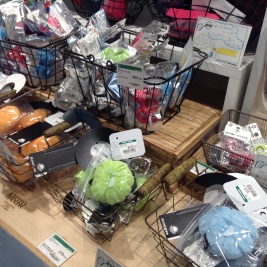
 One thing I wanted to pick up when in Japan was one of those ubiquitous transparent umbrellas because they’re of a good quality.They’re available in a variety of sizes in most convenient stores for only about 500 yen ($5). Miko tells me that people may just grab any umbrella left outside of temples, restaurants, or stores, because it can be impossible to determine which is yours. I had already left a temple with an umbrella that wasn’t the one I’d left at the entrance when I went in, because mine had gone walking. Now I just have to be careful not to lose it in transit on the way home. I should have used something frilly to distinguish it as mine.
One thing I wanted to pick up when in Japan was one of those ubiquitous transparent umbrellas because they’re of a good quality.They’re available in a variety of sizes in most convenient stores for only about 500 yen ($5). Miko tells me that people may just grab any umbrella left outside of temples, restaurants, or stores, because it can be impossible to determine which is yours. I had already left a temple with an umbrella that wasn’t the one I’d left at the entrance when I went in, because mine had gone walking. Now I just have to be careful not to lose it in transit on the way home. I should have used something frilly to distinguish it as mine.
This is the first trip where I navigated the city on my own. Sure, I had guided us through four other countries without us ending up unexpectedly in a village full of cannibals, but Tomo had always been there to make sure I wasn’t reading my map upside down, and in Kyoto, I had always followed behind him and Miko without needing to think. Armed with Google maps, GPS, and a bus map of the city, however, I was good to go, and Kyoto is really easy to get around. The only heart-pounding moment was when I had to walk along a path adjacent to a forested area, where the day before, we’d stumbled upon a herd of wild boar. Long story short, they were large, made some threatening noises, and we bowed to their superiority and fled. We made a wide detour to get back to Miko’s, never to feel safe on that path again.
Miki also wants me to mention that during our dinner together at the rotating sushi restaurant, we encountered a talkative, boisterous businessman who seemed a little short on social etiquette. Tomo had the misfortune of sitting beside him, and ended up having to talk to him for most of the meal, in between periods when the man would complain loudly to the staff of the inferior food they were serving. It seems a lot of people turn to alcohol to relieve their workday stress (and pass it on to everyone around them), but it’s not common to see them at a sushi place. Food and entertainment served together! Poor Tomo.
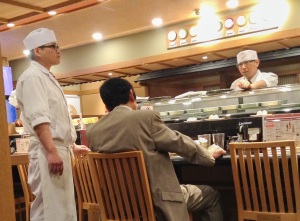














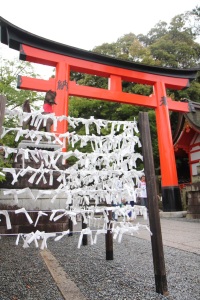




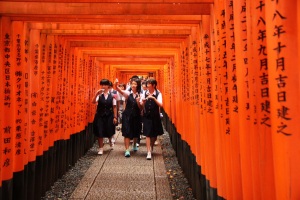








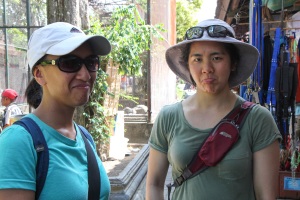
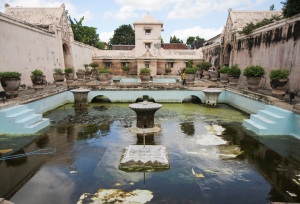





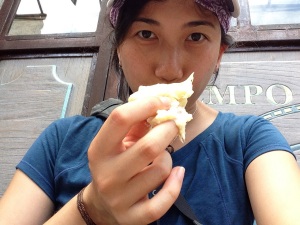

 Built between the 8th and 9th century before being abandoned and buried by jungle and volcanic ash, it was restored between 1973-1983. Shaped like a giant stupa, pilgrims who journey to Borobudur follow a path around each platform while taking in the surrounding reliefs depicting Buddha’s life and teachings. Ascending the stairs up through progressive levels symbolizes the ascension of the soul through the progressive spheres of the universe, until redemption is achieved on the circular platforms at the top. The reliefs and walls give way to a landscape of stupas, each housing a statue of Buddha.
Built between the 8th and 9th century before being abandoned and buried by jungle and volcanic ash, it was restored between 1973-1983. Shaped like a giant stupa, pilgrims who journey to Borobudur follow a path around each platform while taking in the surrounding reliefs depicting Buddha’s life and teachings. Ascending the stairs up through progressive levels symbolizes the ascension of the soul through the progressive spheres of the universe, until redemption is achieved on the circular platforms at the top. The reliefs and walls give way to a landscape of stupas, each housing a statue of Buddha.

 I may have this wrong, as I have not explored this in any depth, but the idea of reaching enlightenment for its own sake rather than for a future reward speaks to me, and seems like a reasonable guiding principle for leading an examined life.
I may have this wrong, as I have not explored this in any depth, but the idea of reaching enlightenment for its own sake rather than for a future reward speaks to me, and seems like a reasonable guiding principle for leading an examined life.




 (I think I’ve just gotten used to the traffic, and toilets where you pee on the floor and wash everything down the drain with water from a bucket. I also haven’t mentioned before this that toilet paper can’t be flushed in most of SE Asia, so it must be tossed into a garbage can, if you don’t want to use water from a hose. Yeah, I haven’t really figured out the logistics of the hose.) The males are taken up a hill, but will return in a hurry when the female in the pair is waved, with wings flapping frantically for balance, by a handler somewhere below. Money is gambled, and fortunes won and lost, depending on the pigeon that returns to its handler the fastest.
(I think I’ve just gotten used to the traffic, and toilets where you pee on the floor and wash everything down the drain with water from a bucket. I also haven’t mentioned before this that toilet paper can’t be flushed in most of SE Asia, so it must be tossed into a garbage can, if you don’t want to use water from a hose. Yeah, I haven’t really figured out the logistics of the hose.) The males are taken up a hill, but will return in a hurry when the female in the pair is waved, with wings flapping frantically for balance, by a handler somewhere below. Money is gambled, and fortunes won and lost, depending on the pigeon that returns to its handler the fastest.